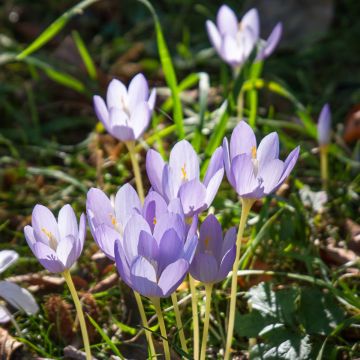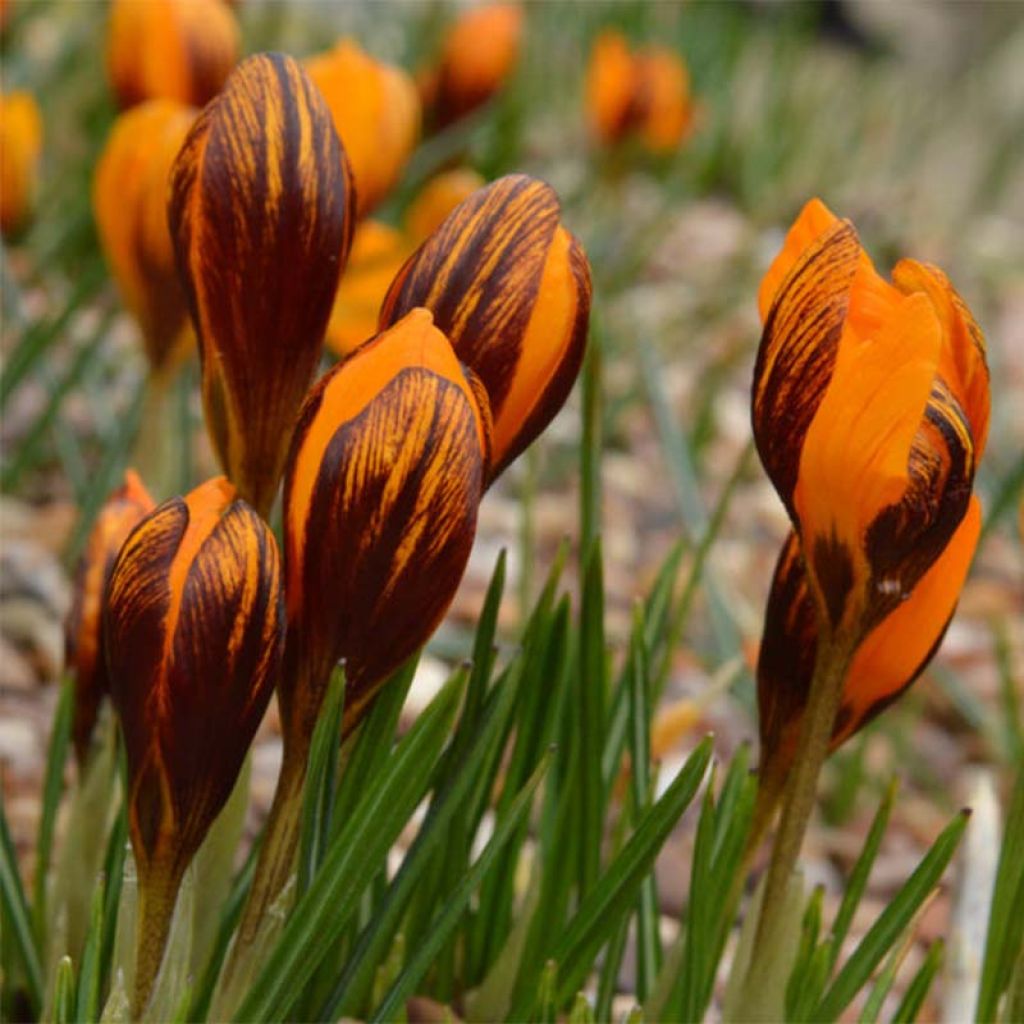

Crocus olivieri subsp. balansae Orange Monarch
View more pictures
Hide images

Thierry P.

January flowering - image 11 - This crocus starts flowering as early as January.
Thierry P. • 84 FR
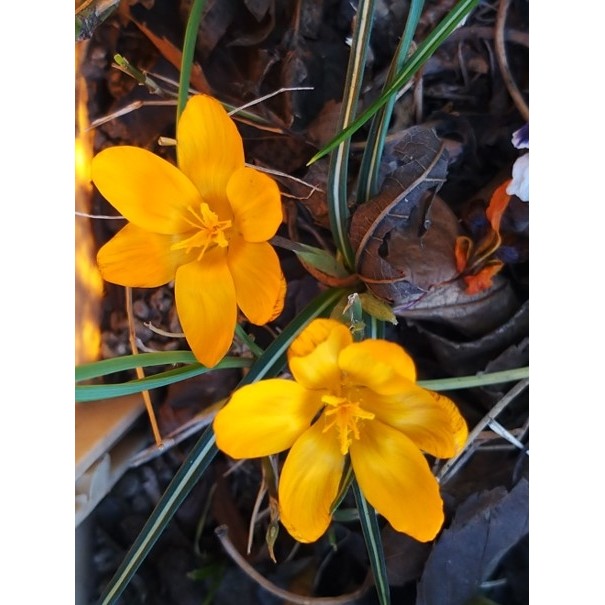
Thierry P.

N/A
Thierry P. • 84 FR

Thierry P.

February flowering - image 7
Thierry P. • 84 FR
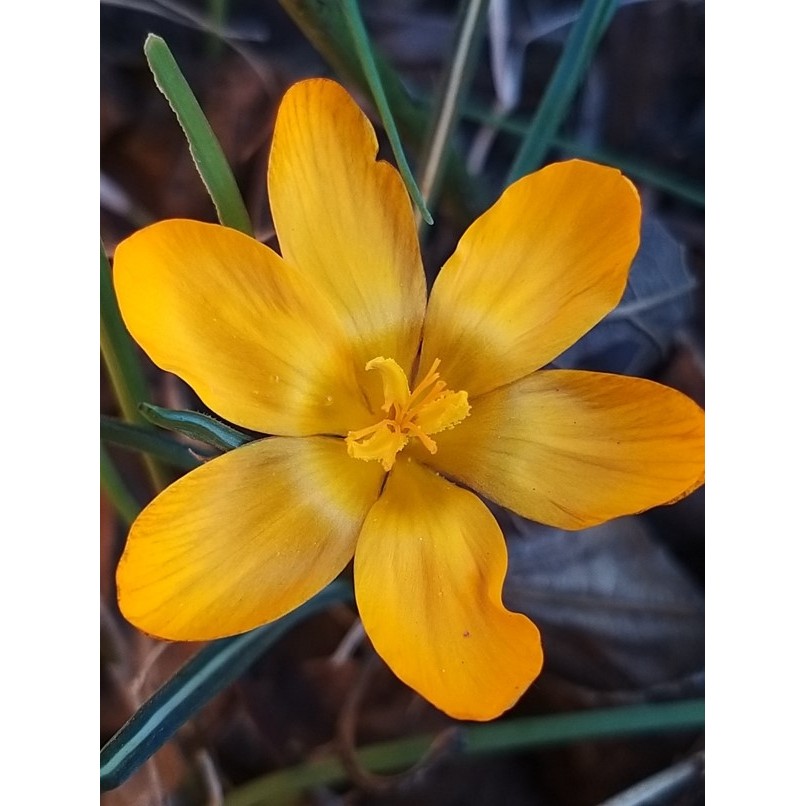
Thierry P.

February flowering - image 3
Thierry P. • 84 FR
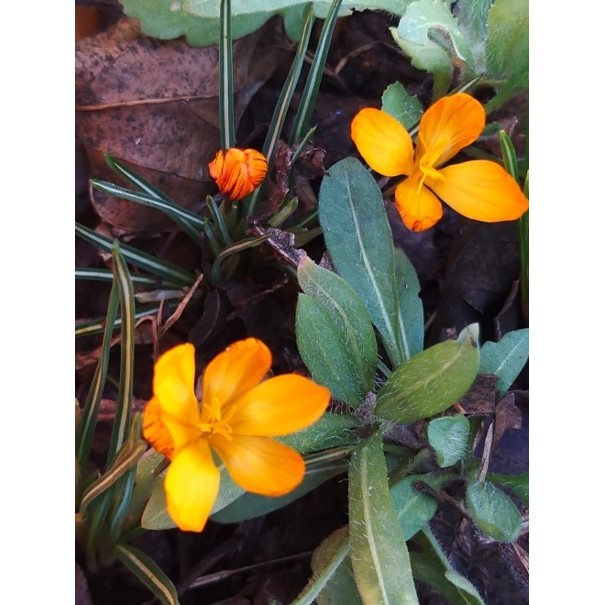
Thierry P.

N/A
Thierry P. • 84 FR
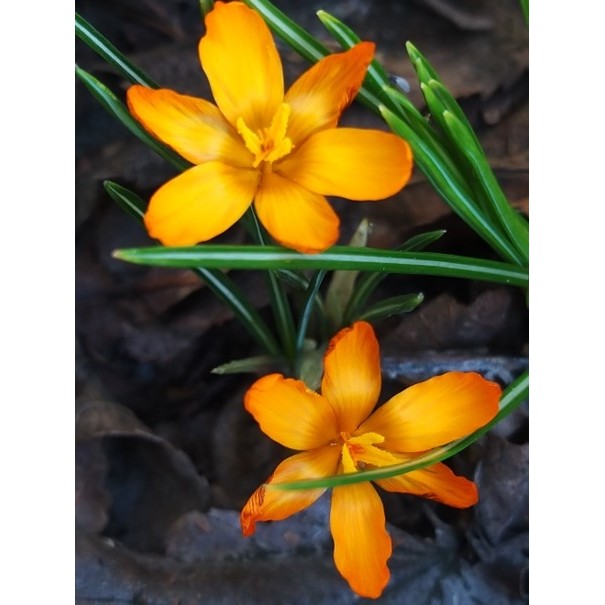
Thierry P.

N/A
Thierry P. • 84 FR
Crocus olivieri subsp. balansae Orange Monarch
Crocus olivieri subsp. balansae Orange Monarch
Balansae Crocus
They bloom very well but: they are tiny (5cm!) And above all, they are not orange but golden yellow, more reminiscent of Crocus Fuscotintus! Very bright but not orange at all.
Mi, 05/02/2025
Special offer!
Receive a €20 voucher for any order over €90 (excluding delivery costs, credit notes, and plastic-free options)!
1- Add your favorite plants to your cart.
2- Once you have reached €90, confirm your order (you can even choose the delivery date!).
3- As soon as your order is shipped, you will receive an email containing your voucher code, valid for 3 months (90 days).
Your voucher is unique and can only be used once, for any order with a minimum value of €20, excluding delivery costs.
Can be combined with other current offers, non-divisible and non-refundable.
This plant carries a 6 months recovery warranty
More information
We guarantee the quality of our plants for a full growing cycle, and will replace at our expense any plant that fails to recover under normal climatic and planting conditions.

Would this plant suit my garden?
Set up your Plantfit profile →
Description
The 'Orange Monarch' Crocus is very similar to a botanical species called Crocus olivieri balansae, a small robust plant with flowers that have a truly unique colour, resembling the Monarch butterfly, a magnificent American migratory butterfly. Each bulb produces 3 stems that each bear 3 flowers, and what flowers they are! They display a gorgeous orange colour, striated and streaked with almost black purple on the reverse of the petals. They emerge in late winter, sometimes piercing through the last snow with their flame-like flowers. Plant this small bulb where you can enjoy its exceptional flowering, not far from the house or even in a planter.
The 'Orange Monarch' Crocus belongs to the iris family. Its ancestor originated in western Turkey. 'Orange Monarch' forms significant colonies over time, with upright clumps reaching a height of 15 cm (6in), for rapid growth and multiplication. Flowering takes place from February to March depending on the climate. The plants produce numerous cup-shaped flowers that open like stars. The exterior of the corolla is bi-coloured, widely striped and mottled with almost black purple-violet on a coppery orange background. The throat is bright yellow, adorned with stamens clustered in a 'tube', of a very bright orange-yellow. They close at night and during bad weather, only to open widely in the sun and even in partial shade. The foliage is deciduous, composed of very thin linear leaves, simple and alternate, of a shiny dark green colour, with a white-silver central stripe. The 'bulbs' here are corms. A corm is, in plant morphology, an underground reserve organ that resembles a bulb, but is formed by a swollen stem surrounded by scales.
Crocuses are undisputed stars, as they are the first smiles of spring. The dazzling 'Orange Monarch' Crocus works wonders in rock gardens, well-drained borders, and along pathways. It will also thrive at the edge of a clear woodland with snowflakes and primroses, along a hedge, planted en masse at the base of deciduous trees (lilacs, mock oranges, viburnums) with hellebores and winter cyclamens, or in the middle of a short grass meadow with winter aconites, snowdrops, or a carpet of violets, and of course, combined with other early-flowering crocuses. This crocus is also suitable for outdoor container planting. It is worth mentioning that early-flowering crocuses dislike waterlogged soils in winter and excessively humid soils in summer: always plant them in perfectly well-drained soil, even dry in summer.
A tip for crocuses: the roots have the particular ability to contract like a spring, allowing the plant to establish itself at the ideal depth for the plant.
Report an error about the product description
Crocus olivieri subsp. balansae Orange Monarch in pictures
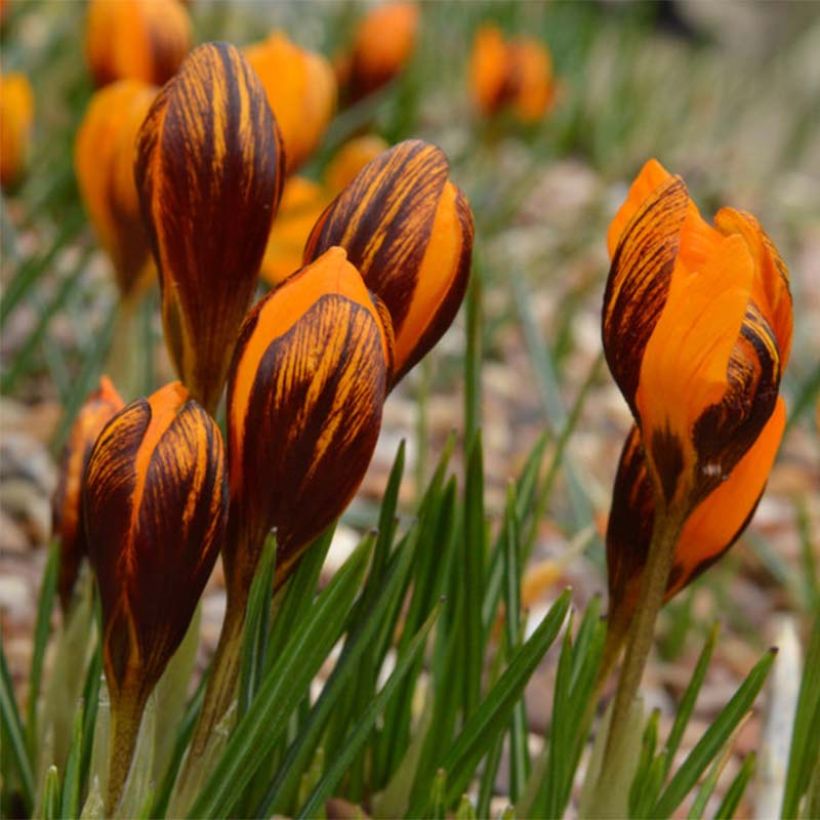

Plant habit
Flowering
Foliage
Botanical data
Crocus
olivieri subsp. balansae
Orange Monarch
Iridaceae
Balansae Crocus
Cultivar or hybrid
Other Spring Crocus
View all →Planting and care
Planting period
Intended location
Care
-
, onOrder confirmed
Reply from on Promesse de fleurs
Haven't found what you were looking for?
Hardiness is the lowest winter temperature a plant can endure without suffering serious damage or even dying. However, hardiness is affected by location (a sheltered area, such as a patio), protection (winter cover) and soil type (hardiness is improved by well-drained soil).

Photo Sharing Terms & Conditions
In order to encourage gardeners to interact and share their experiences, Promesse de fleurs offers various media enabling content to be uploaded onto its Site - in particular via the ‘Photo sharing’ module.
The User agrees to refrain from:
- Posting any content that is illegal, prejudicial, insulting, racist, inciteful to hatred, revisionist, contrary to public decency, that infringes on privacy or on the privacy rights of third parties, in particular the publicity rights of persons and goods, intellectual property rights, or the right to privacy.
- Submitting content on behalf of a third party;
- Impersonate the identity of a third party and/or publish any personal information about a third party;
In general, the User undertakes to refrain from any unethical behaviour.
All Content (in particular text, comments, files, images, photos, videos, creative works, etc.), which may be subject to property or intellectual property rights, image or other private rights, shall remain the property of the User, subject to the limited rights granted by the terms of the licence granted by Promesse de fleurs as stated below. Users are at liberty to publish or not to publish such Content on the Site, notably via the ‘Photo Sharing’ facility, and accept that this Content shall be made public and freely accessible, notably on the Internet.
Users further acknowledge, undertake to have ,and guarantee that they hold all necessary rights and permissions to publish such material on the Site, in particular with regard to the legislation in force pertaining to any privacy, property, intellectual property, image, or contractual rights, or rights of any other nature. By publishing such Content on the Site, Users acknowledge accepting full liability as publishers of the Content within the meaning of the law, and grant Promesse de fleurs, free of charge, an inclusive, worldwide licence for the said Content for the entire duration of its publication, including all reproduction, representation, up/downloading, displaying, performing, transmission, and storage rights.
Users also grant permission for their name to be linked to the Content and accept that this link may not always be made available.
By engaging in posting material, Users consent to their Content becoming automatically accessible on the Internet, in particular on other sites and/or blogs and/or web pages of the Promesse de fleurs site, including in particular social pages and the Promesse de fleurs catalogue.
Users may secure the removal of entrusted content free of charge by issuing a simple request via our contact form.
The flowering period indicated on our website applies to countries and regions located in USDA zone 8 (France, the United Kingdom, Ireland, the Netherlands, etc.)
It will vary according to where you live:
- In zones 9 to 10 (Italy, Spain, Greece, etc.), flowering will occur about 2 to 4 weeks earlier.
- In zones 6 to 7 (Germany, Poland, Slovenia, and lower mountainous regions), flowering will be delayed by 2 to 3 weeks.
- In zone 5 (Central Europe, Scandinavia), blooming will be delayed by 3 to 5 weeks.
In temperate climates, pruning of spring-flowering shrubs (forsythia, spireas, etc.) should be done just after flowering.
Pruning of summer-flowering shrubs (Indian Lilac, Perovskia, etc.) can be done in winter or spring.
In cold regions as well as with frost-sensitive plants, avoid pruning too early when severe frosts may still occur.
The planting period indicated on our website applies to countries and regions located in USDA zone 8 (France, United Kingdom, Ireland, Netherlands).
It will vary according to where you live:
- In Mediterranean zones (Marseille, Madrid, Milan, etc.), autumn and winter are the best planting periods.
- In continental zones (Strasbourg, Munich, Vienna, etc.), delay planting by 2 to 3 weeks in spring and bring it forward by 2 to 4 weeks in autumn.
- In mountainous regions (the Alps, Pyrenees, Carpathians, etc.), it is best to plant in late spring (May-June) or late summer (August-September).
The harvesting period indicated on our website applies to countries and regions in USDA zone 8 (France, England, Ireland, the Netherlands).
In colder areas (Scandinavia, Poland, Austria...) fruit and vegetable harvests are likely to be delayed by 3-4 weeks.
In warmer areas (Italy, Spain, Greece, etc.), harvesting will probably take place earlier, depending on weather conditions.
The sowing periods indicated on our website apply to countries and regions within USDA Zone 8 (France, UK, Ireland, Netherlands).
In colder areas (Scandinavia, Poland, Austria...), delay any outdoor sowing by 3-4 weeks, or sow under glass.
In warmer climes (Italy, Spain, Greece, etc.), bring outdoor sowing forward by a few weeks.






























